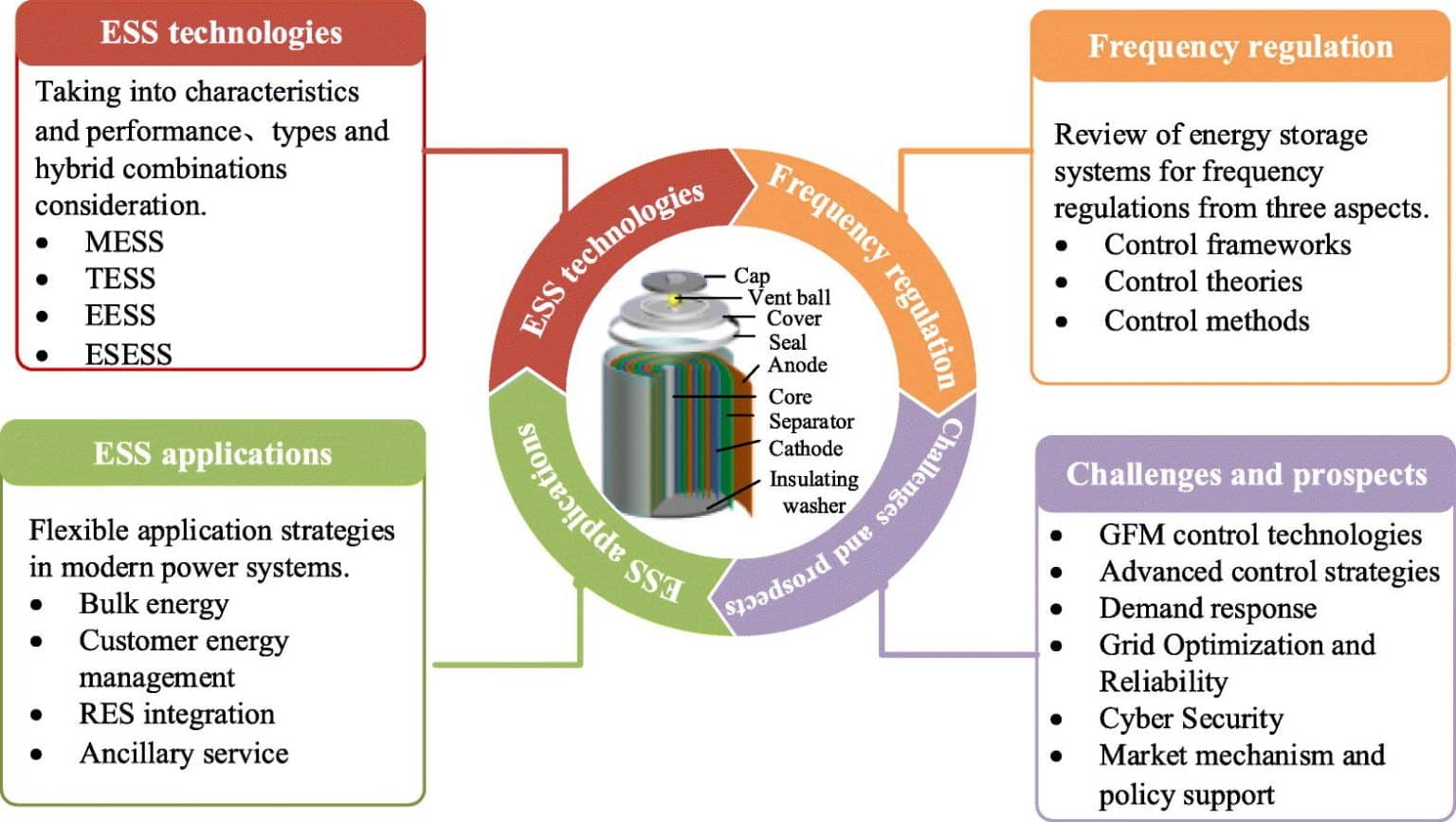In power systems with high shares of renewables, traditional inertia is vanishing. The surge in global renewable energy penetration—23.2% of power generation as of 2019 and climbing—has outpaced grid modernization efforts, creating a widening gap between power generation variability and system stability. This shift has elevated energy storage systems (ESSs) from supportive infrastructure to a central pillar in grid frequency regulation—a role previously dominated by conventional rotating machinery.
Frequency Instability: A Consequence of High Renewable Penetration
As synchronous generators give way to inverter-based renewable energy sources (RESs), system inertia, which historically dampened frequency deviations, is plummeting. The result is a grid highly susceptible to frequency fluctuations, where even minor disturbances can propagate rapidly and lead to cascading failures. Frequency regulation (FR), once an ancillary concern, is now critical to ensuring both reliability and economic continuity.
Yet many utilities still struggle with implementing ESS-based FR, not for lack of technology but due to fragmented integration strategies. According to the recent review by Huang et al. (2025), while ESSs are capable of near-instantaneous response times and scalable control, their deployment for frequency regulation lacks a unified framework across markets and operators.
Four ESS Classes, Divergent Capabilities
The review dissects ESS technologies into four primary categories: Mechanical (MESS), Thermal (TESS), Electrical (EESS), and Electrochemical (ECESS). Each comes with a different response profile:
- MESS, including flywheels and pumped hydro, offers high power outputs and mechanical robustness but suffers from limited placement flexibility and slower ramp rates.
- TESS, while promising in industrial waste heat recovery and CSP applications, is underutilized in real-time FR due to latency and thermal inertia.
- EESS, such as superconducting magnetic systems and supercapacitors, excels in fast frequency response but remains niche due to cost and energy density limitations.
- ECESS, particularly lithium-ion batteries and redox flow batteries, has become the de facto standard in modern frequency control thanks to fast response times, scalability, and declining capital costs.
However, the authors argue that no single ESS type currently meets the full spectrum of grid demands. Hybrid energy storage systems (HESS) combining technologies—such as battery-flywheel or battery-supercapacitor—are gaining traction for layered FR services, though real-world applications remain limited.
Control Hierarchies: From Theory to Implementation Gaps
What sets this review apart is its layered analysis of control mechanisms for ESSs in FR. It identifies three tiers:
- Control Frameworks: Grid-forming and grid-following inverters, droop control, and virtual inertia are foundational, but inconsistently applied across grid operators.
- Control Theories: Techniques like PI control, fuzzy logic (FLC), sliding mode control (SMC), and model predictive control (MPC) underpin algorithmic decision-making but vary in robustness against RES volatility.
- Implementation Methods: Strategies like hybrid control schemes, wind-storage coordination, and SOC-feedback modulation illustrate the complex, real-time orchestration needed to stabilize frequency under fluctuating supply.
Yet despite technical maturity in theory, the gap in field deployments remains stark. For example, virtual synchronous machine (VSM) concepts have been extensively modeled but lack standardization and certification protocols, delaying their role in system operator toolkits.
Ancillary Markets Still Undervalue Fast-Acting Storage
One persistent bottleneck is economic: most grid operators fail to compensate ESSs adequately for their superior ramp rates and precision. Market mechanisms often reward energy delivery over speed and accuracy—factors where ESSs outperform gas turbines or demand response.
Without market reforms, the high capex of ESS projects cannot be offset by frequency regulation revenues alone. In response, jurisdictions like the UK (via National Grid’s Dynamic Containment) and PJM in the U.S. have introduced high-speed FR products. But adoption remains fragmented globally.
Toward Adaptive ESS Integration
The authors point toward several emergent solutions. Vehicle-to-grid (V2G) systems could aggregate EV batteries for decentralized FR, while intelligent distributed control and cyber-physical system co-design promise to synchronize ESS assets across the grid. Still, these innovations face hurdles in communication protocols, latency management, and cybersecurity resilience.
Critically, the review emphasizes that future ESS deployment must be control-centric, not just capacity-centric. That is, selecting an ESS for its energy rating alone ignores its real-time control potential—a misalignment that leads to underutilized assets and unstable frequency profiles.
Grid Planning Must Catch Up to ESS Capabilities
While RES growth continues to outpace legacy grid adaptation, energy storage is emerging as the missing keystone. Yet as the authors argue, maximizing ESS value requires more than just technical performance. Regulatory harmonization, market redesign, and control-oriented planning must align for ESS to fulfill its frequency regulation promise.
Absent these shifts, the industry risks perpetuating a mismatch between RES-driven instability and the under-leveraged potential of ESSs to correct it—technically capable, but structurally sidelined.





